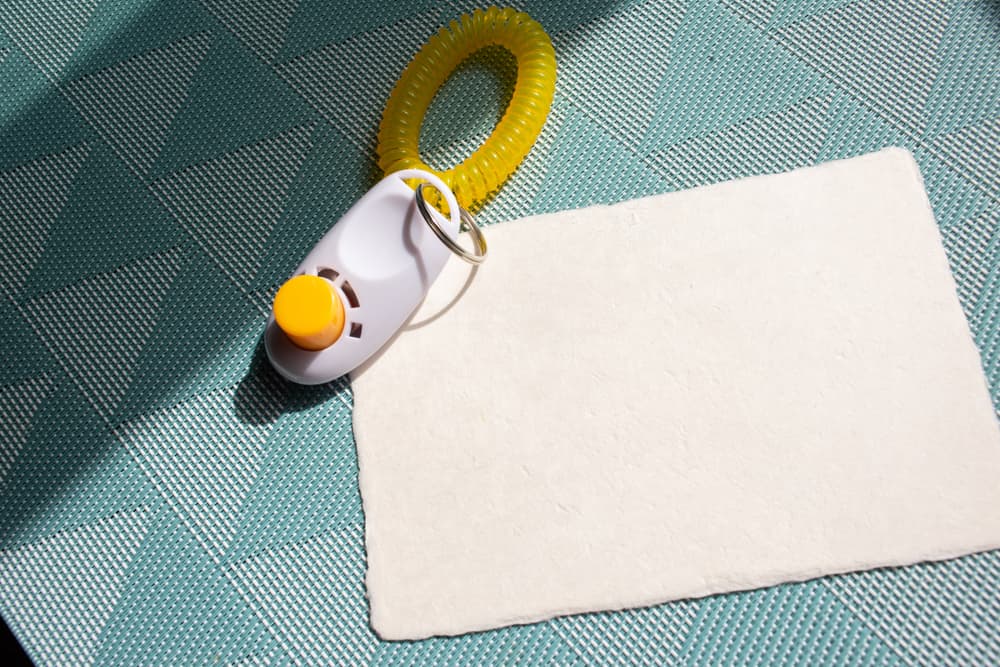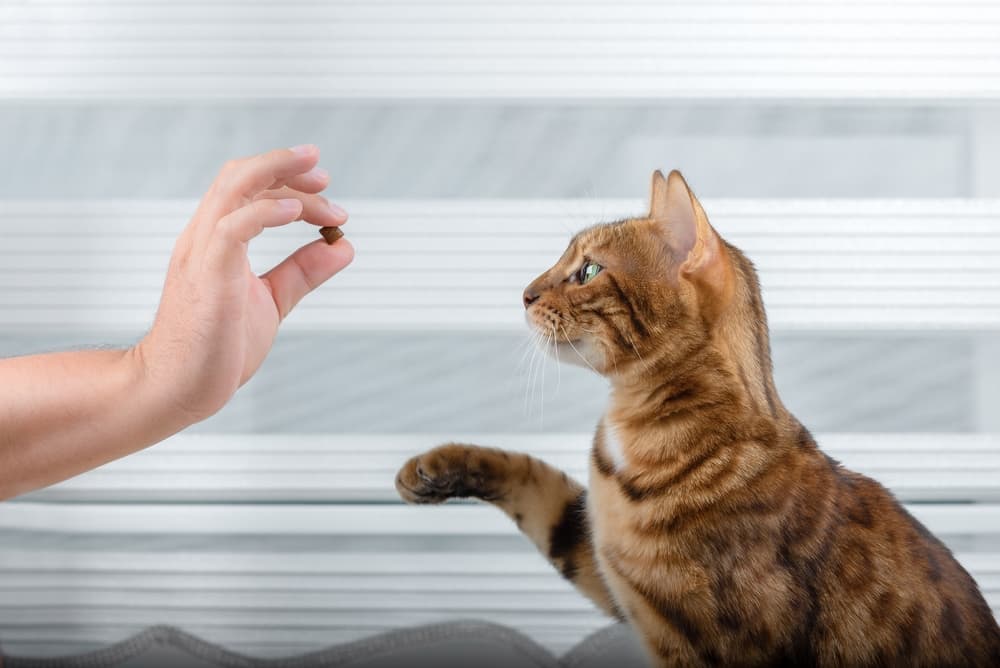Clicker Training for Cats: How to Do It

Contrary to what many people think—and what your cat may want you to believe—you can, in fact, train a cat. But what about clicker training for cats? Does the positive reinforcement method that’s often used to train dogs work on our feline friends, too?
According to professional cat trainers, you can absolutely clicker train a cat. “I use clicker training quite a lot with cats,” says Dr. Marci Koski, PhD, a certified feline behavior and training consultant who runs Feline Behavior Solutions. “It’s not just fun, it can also really help with behavior issues, too. It’s a really great tool.”
With proper clicker training, you can teach your cat tricks, guide them through agility courses, encourage them to visit the vet, and help calm their behavior around other animals. You just need to know how to tweak this popular training method so it’s cat-friendly.
What is Clicker Training for Cats?

Also known as “mark and reward,” clicker training relies on a small handheld clicker (which makes an actual “click” sound when pressed) to show your cat the exact moment they’ve done something you wanted them to do. Each time they hear the click, your cat will get a reward.
Koski says that cats can be clicker trained at any age—in fact, hers was 10 years old when she trained her. Susan Bulanda, a certified member of the International Association of Animal Behavior Consultants, agrees, saying kittens make ideal students since they’re naturally more active and curious.
Benefits of Clicker Training for Cats

“Clicker training can really open up a new way to communicate with your cat,” Koski says. A clicker lets you instantly acknowledge any good behavior—which is why she recommends getting a clicker with a strap. That way, you can keep it close at hand, so you’re always ready to reinforce whenever you “catch” your cat doing something good.
Clicker training can also be used as a reward system for mental exercise, like learning new tricks, as well as any behavior you want to reinforce — from bravery in the car to clawing up a scratching post instead of a sofa.
Clicker Training for Cats: Before You Begin

“Before you can clicker train a cat, you must find a very special treat that the cat loves,” recommends Bulanda. That’s because clicker training is all about rewarding behaviors immediately after marking them with a click. “You need to figure out what your cat is willing to work for,” Koski says. “That is often the hardest part.”
Most cats do well with a favorite treat, though Koski suggests finding a low-calorie variety since you’ll be handing out a lot of them. She recommends using a treat that comes in a squeezable tube for easy dispensing, small pieces of plain cooked chicken breast, or pieces of dry food. According to Bulanda, whatever treat you choose, it should be used only for clicker training.
It’s trickier with cats who aren’t food-motivated. Koski suggests rewarding those cats by brushing or petting them, engaging in active play with a favorite toy, or simply offering extra affection and attention.
You don’t need to carve out much time for a clicker training session. Each one should only last a few minutes. Just be sure to set up in a place with minimal distractions, where your cat already feels comfortable. And if you’re planning to teach tricks that require props, be sure to set those out ahead of time.
How to Clicker Train a Cat: 4 Easy Steps

1. Stock up on high-value treats or rewards. Once you figure out a reward that your cat is eager to work for, make sure you have plenty of it on hand when you’re ready to start training (in the case of treats) or easy access to it (in the case of non-food rewards, like toys).
2. Create a link between clicker and reward. When first starting out, there’s no need to wait for good behavior when you train. Simply click, give your reward, wait for your cat to eat it or enjoy it, and then repeat about six to 10 times for a total of about two minutes.
Koski recommends doing this over a series of three sessions. “By then, your cat should understand that when they hear the click, a reward magically appears,” she says.
3. Click and reward to reinforce good behavior. Now you can start using the clicker to mark any positive behavior: when your cat gives you a high five, uses a scratching post, or walks by a cat frenemy without hissing and growling. If you do this consistently, your cat will learn what you want them to do. Just remember that the click itself is not a reward. It’s simply a signal that your cat did the right thing and a treat is coming immediately. Nor is it a command. You’ll still need to use words or hand signals as actual commands. And don’t forget to keep sessions short: a few minutes is plenty.
4. Switch up your rewards. Once your cat has mastered a certain command, you can continue reinforcing it on what Koski calls “a variable schedule.” There should still be a reward each time the positive behavior happens, but it doesn’t need to be a high-value treat each time. Sometimes it will, but other times it can be a less enticing treat or even just simple praise.
“It’s the exact same psychology behind slot machines,” Koski says. Once you’ve linked a stimulus with a high-value reward, introducing different rewards unpredictably can be even more motivating because there’s always a chance your cat will “win” the prized reward.
Other Helpful Tips

As with any type of training, it may take some time for your cat to “get it.” Here are some important “dos and don’ts” to keep in mind when clicker training your cat to help you succeed.
DO choose a clicker that works for your cat. A sharp, loud click that might work well for dogs could frighten some cats. Koski prefers rounded, flatter clickers because they tend to be quieter than the usual box type. If that’s still too loud for your cat, she suggests enclosing it in your palm to muffle the noise, holding it behind your back, or even putting it in a sock. If your cat still doesn’t like the noise, she says you can just click a pen or even try using a Snapple lid—just be consistent with whatever “click” you and your cat settle on.
If you’re trying to train multiple cats, DO start them out separately. Koski says it’s essential to teach each cat their own clicker association and commands individually. Otherwise, you risk sending mixed messages whenever you click. Once all the cats know their commands, you can work with more than one at a time.
DON’T use a clicker to punish unwanted behaviors or to get your cat’s attention. You want a simple, clear connection between behavior, click, and reward. Introducing any other elements muddles your message and weakens the feedback loop.
“At first the clicker is going to feel awkward, and there’s a lot to concentrate on,” Koski says. “Sometimes it feels like you need three hands. But hang in there. You’ll get more comfortable, and it’s fun to see success while opening a whole new line of communication between you and your cat.”









